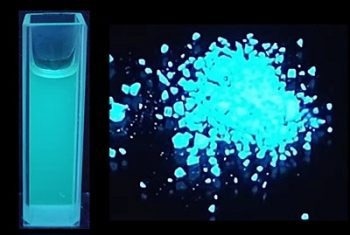Reviewed by Danielle Ellis, B.Sc.Apr 21 2023
Plants that glow in ultraviolet (UV) light are not only a figment of science fiction TV and film. The roots of the orange climber, Toddalia asiatica, a traditional medicine plant, can emit an ethereal blue hue. Investigators at ACS Central Science have now identified two coumarin compounds that could be to blame. These natural coumarins exhibit distinct fluorescence properties, and one of the molecules could be exploited for medical imaging in the future.

A fluorescent compound from a plant root could help image cells quickly. Image Credit: ACS Central Science 2023.
Fluorescent substances absorb UV light and emit vibrantly colored visible light in response. Some glow even brighter when they are in close proximity, a behavior observed in compounds known as aggregation-induced emission luminogens (AIEgens).
AIEgens play critical roles in optical devices, cellular imaging techniques, and environmental sensors. However, these compounds are often created in a laboratory, and many of them are hazardous. Because some plants already have this capability, Ben Zhong Tang, Zheng Zhao, Xiao-Dong Luo, and colleagues resorted to nature for naturally occurring and safer AIEgens.
The investigators dried orange climber roots and ground them into a powder before isolating and identifying coumarin compounds with aggregation-induced emission properties: 5-methoxyseselin (5-MOS) and 6-methoxyseselin (6-MOS).
When 5-MOS was dissolved in an organic solvent, it gave off a blue-green glow, while 6-MOS gave off a slightly dimmer blue glow. Furthermore, both AIEgens were low in cytotoxicity and biocompatibility.
The scientists discovered that mitochondria could be clearly detected in living cells stained with 5-MOS without any extra processing in a final series of studies, making cell imaging easier and faster than most current approaches. According to the researchers, the newly discovered molecule is a natural, plant-derived option that could boost bioimaging.
Source:
Journal reference:
Chen, S.-S., et al. (2023) Natural Coumarin Isomers with Dramatically Different AIE Properties: Mechanism and Application. ACS Central Science. https://doi.org/10.1021/acscentsci.3c00012.